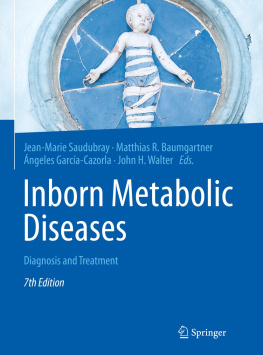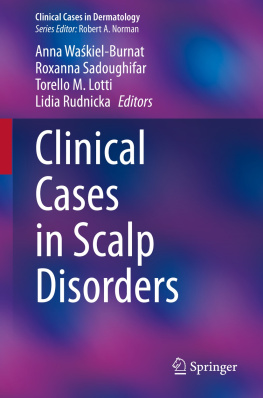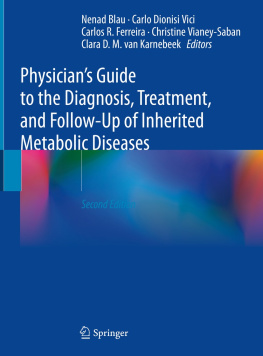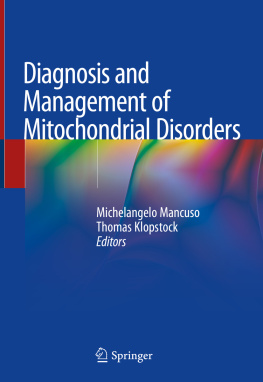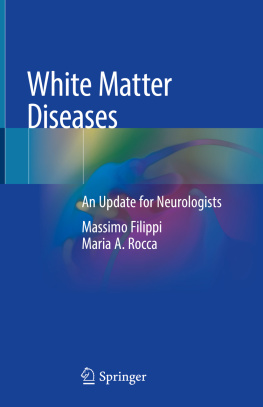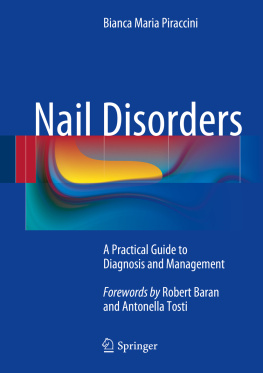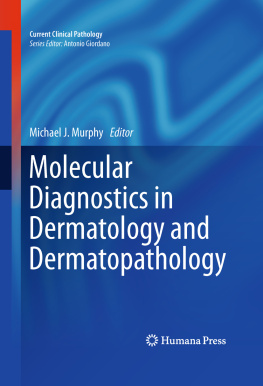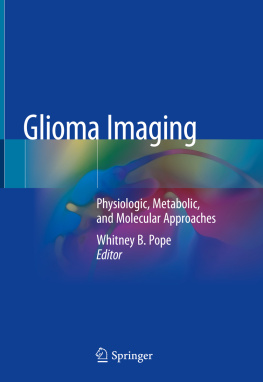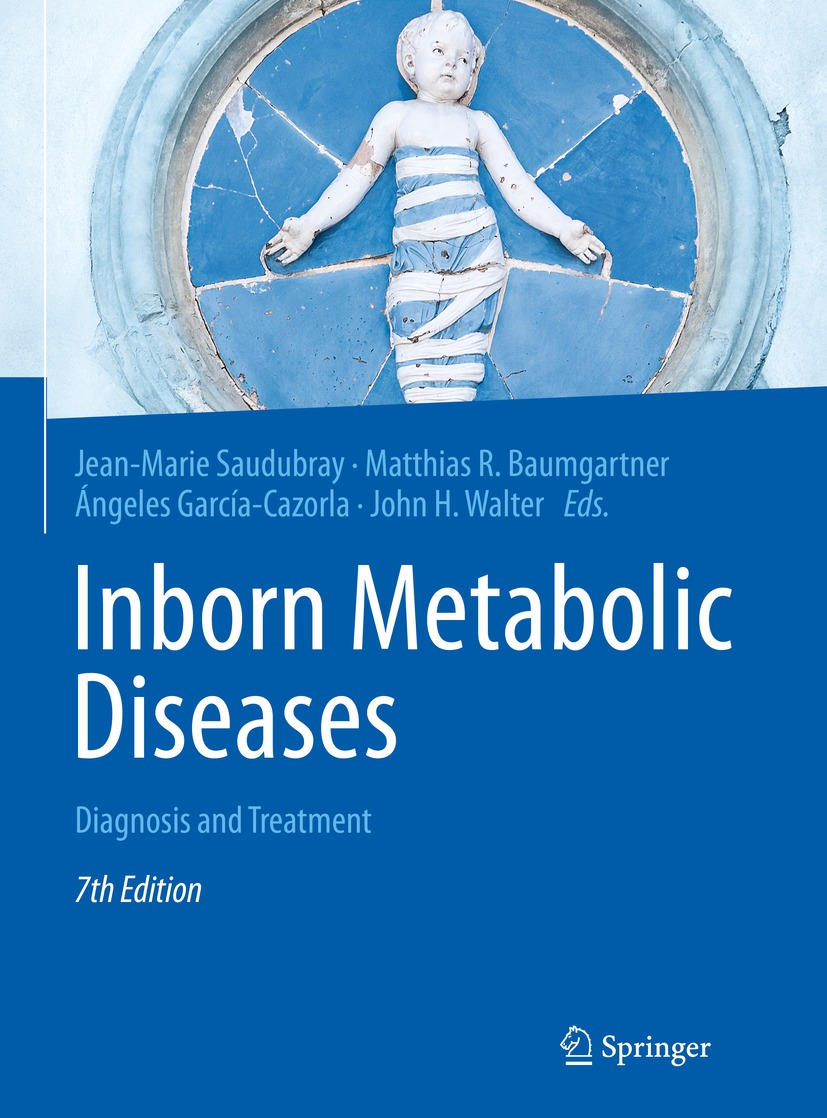Editors
Jean-Marie Saudubray
Paris, France
Matthias R. Baumgartner
Division of Metabolism, University Childrens Hospital University of Zurich, Zurich, Switzerland
ngeles Garca-Cazorla
Servicio de Neurologia, Hospital Sant Joan de Deu, Barcelona, Barcelona, Spain
John H. Walter
Developmental Biology and Medicine, School of Medical Sciences University of Manchester, Manchester, UK
ISBN 978-3-662-63122-5 e-ISBN 978-3-662-63123-2
https://doi.org/10.1007/978-3-662-63123-2
Springer-Verlag GmbH Germany, part of Springer Nature 1990, 1995, 2000, 2006, 2012, 2016, 2022
This work is subject to copyright. All rights are reserved by the Publisher, whether the whole or part of the material is concerned, specifically the rights of translation, reprinting, reuse of illustrations, recitation, broadcasting, reproduction on microfilms or in any other physical way, and transmission or information storage and retrieval, electronic adaptation, computer software, or by similar or dissimilar methodology now known or hereafter developed.
The use of general descriptive names, registered names, trademarks, service marks, etc. in this publication does not imply, even in the absence of a specific statement, that such names are exempt from the relevant protective laws and regulations and therefore free for general use.
The publisher, the authors and the editors are safe to assume that the advice and information in this book are believed to be true and accurate at the date of publication. Neither the publisher nor the authors or the editors give a warranty, expressed or implied, with respect to the material contained herein or for any errors or omissions that may have been made. The publisher remains neutral with regard to jurisdictional claims in published maps and institutional affiliations.
Cover image: pio3/stock.adobe.com
This Springer imprint is published by the registered company Springer-Verlag GmbH, DE, part of Springer Nature.
The registered company address is: Heidelberger Platz 3, 14197 Berlin, Germany
Preface
This 7th edition is a milestone in the series of Inborn Metabolic Diseases (IMD): Diagnosis and Treatment, first published in 1990.
Within the last 6 years a Copernican revolution in our understanding of IMD has changed the definition, concepts, paradigms, and classification. This new edition confirms the ubiquity of biochemical reactions in cellular biological processes, disturbances of which cause the large majority of human genetic disorders, many not classically labelled as metabolic diseases.
While previous editions remained largely focused on disorders of intermediary metabolism and organelles, mostly diagnosed with metabolic markers, this edition extends the concept of IMD to include disturbances of molecular machinery, diagnosed by molecular techniques but which currently may not have measurable metabolic markers.
About 600 new disorders are described in this 7th edition. Many are included in two new chapters: Chap. , Disorders of Cellular Trafficking. Defects in complex molecule synthesis and remodelling, many disorders of cellular or organelles transporters involving small or complex molecules, and new disorders involving energetic processes have also been considerably expanded.
Up to 85% of IMDs impact on neurodevelopment or are responsible for neurodegeneration. Acute, chronic or progressive neurological syndromes, psychiatric presentations, developmental delay, intellectual disability, neurodevelopment disturbances and neurodegeneration at any age deserve special attention. A new editor with a special expertise in neurology has joined us for the purpose of describing these disorders. The description of neurological presentations, with about 35 tables and algorithms, now accounts for about 50% of Chap..
While the most recent international classification of inborn errors of metabolism (IEM) encompasses >1400 disorders, from a clinical point of view, all IEM can be maintained in a simplified classification that mixes elements from a clinical diagnostic perspective and a pathophysiological approach based on three large groups. Our general clinical approach and algorithms are based upon this simplified classification and presented in Chap. which should be read first.
In this era of genome sequencing, powerful computerized programs, and emerging artificial intelligence, we remain convinced that metabolic physicians must have a sound clinical training. As biochemical and molecular investigations grow in complexity, there is a risk that these effective but complex, time consuming, and expensive methods will be used in an uncontrolled and uncritical way. In view of the major improvements in treatment, it is crucial that clinicians do not miss IMD for which specific and effective treatment may be available. Physicians should be able to initiate a simple method of clinical screening, particularly in the emergency room, not only for children but also for adults.
While this new edition highlights recent findings, it continues to provide a comprehensive review of all IEM, with a particular focus on the clinical and biochemical approach to recognition, diagnosis and treatment at all ages. The clinical algorithms of Chaps..
As before, we continue to advocate referral to specialist centres for the diagnosis and treatment of inherited metabolic disorders. For countries in the Europe a list of such centres is compiled by the Society for the Study of Inborn Errors of Metabolism (SSIEM), while for the United States and Canada, Japan, Australia, South American and Middle East countries, comparable lists are compiled by the American (SIMD), Japanese (JIMD), Australian (AIMD) South Latin America (SLEIMPN) and Middle East societies for the study of inherited metabolic diseases, respectively.
We welcome new authors and thank those previous authors who, while not involved with this edition, have helped to lay the foundation for this book.
Jean-Marie Saudubray
Matthias R. Baumgartner
ngeles Garca-Cazorla
John H. Walter
Paris, France Zurich, Switzerland Barcelona, Spain Manchester, UK

